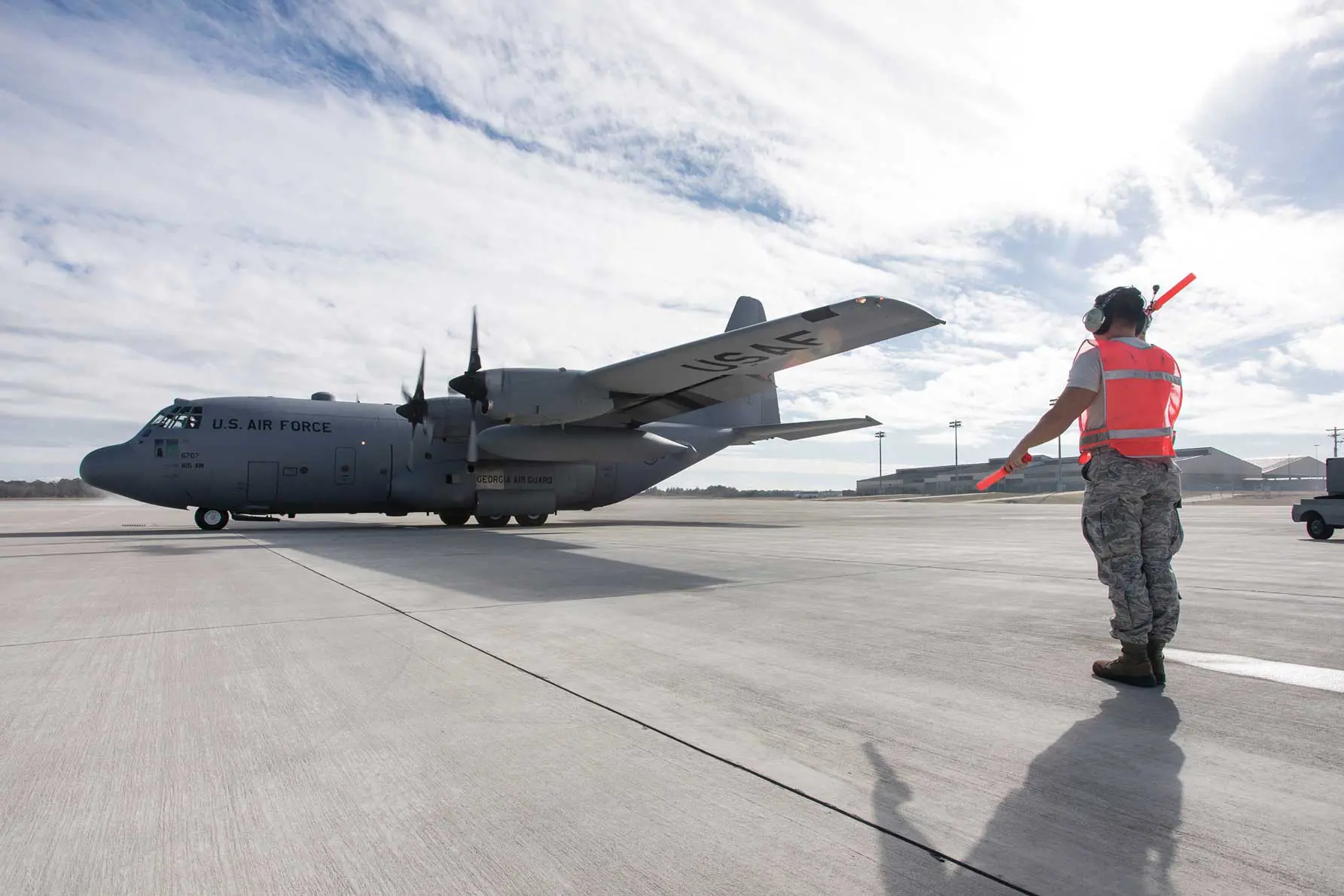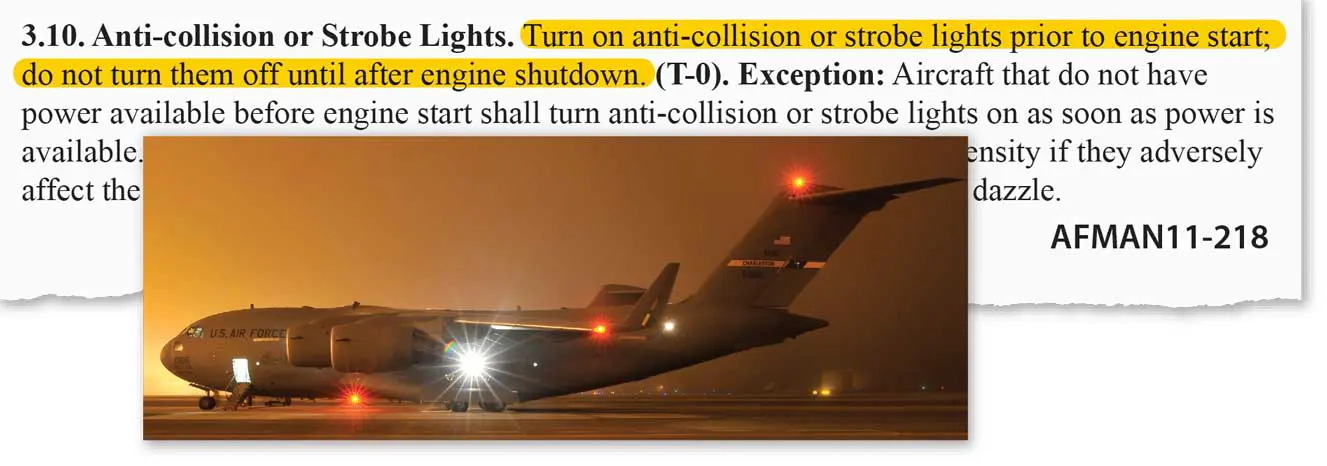The Ramp is a Dangerous Place
By YOUR AMC OPS RAMS TEAM
Preamble: Before we dive into the Airman Safety Action Program (ASAP) analysis, the Operations Risk Assessment and Management System (Ops RAMS) Branch lauds the submitter for a powerful, self-critiquing assessment of their performance. In a Just Culture environment, we sincerely appreciate crewmembers who share their errors so we can all learn how to improve our performance. Additionally, the crewmember showed true professionalism and candor in assessing the human factors that contributed to the error chain. Thank you for contributing to Proactive Safety!
Alabama airline worker sucked into engine with ‘bang,’ plane filled with passengers shook violently: NTSB
American Airlines subsidiary ground crew worker killed at Montgomery Regional Airport in Alabama
This headline should make all of us cringe as a blunt reminder of the danger of working on an aircraft ramp. In its preliminary report of this New Year’s Eve incident (December 31, 2022), the National Traffic Safety Board (NTSB) revealed “The marshaller could be seen backing away from the airplane’s open forward cargo door, and the ramp agent from the back of the airplane reappeared walking along the leading edge of the left wing and directly in front of the number one engine. She was subsequently pulled off her feet and into the operating engine. Throughout the course of the accident, the airplane’s upper rotating beacon light appeared to be illuminated.†In the report, the NTSB further cited The American Eagle Ground Operations Manual: “NEVER approach an aircraft to position ground equipment next to an aircraft or open cargo bin doors until the engines are shut down and the rotating beacon(s) turned off…â€
It is easy to dismiss this airline industry mishap as “that is them (civilian airlines), not us (the Air Force)†until you read a recent ASAP report that shows striking similarities, but fortunately without a fatality.
— ASAP 24425 EVENT NARRATIVE—
On [DATE redacted] around [TIME redacted] at [LOCATION redacted] a fleet services member instructed another member to spot a lavatory service truck up to a [aircraft] operated by the heavy airlift wing. During this time the aircraft engines were still running and the anti-collision lights were operating. The spotter and vehicle operator were within three feet of the aircraft with engines running attempting to perform lavatory services.
Analysis of our Air Force procedures show the same procedures and warnings indicated in the civilian airline procedures:
In this particular ASAP case, along with other events, we were lucky; however, luck is not a strategy. Being prepared and aware on the flightline is an effective strategy. Flightline safety relies on adherence to procedures, communication, and situational awareness. The aircraft ramp is a dangerous place; thus, we should not be complacent while working in that environment. Let us look at a few ASAP examples that remind us of those flightline dangers and what we can learn from those close calls.
—ASAP 25666 EVENT NARRATIVE—
During ground operations on a local KC-135 training mission, the aircrew received a new ATIS [Automatic Terminal Information Service] update with deteriorating weather conditions. The pilots were concerned that the weather minimums were now below what is required by a local supplement to takeoff [for a training line]. I [the AC {aircraft commander}] elected to continue the checklist and proceed into the Starting Engines and Before Taxi checklist to ensure there would be no maintenance delays on top of the potential weather delay. I told my ground crew that we would continue the checklist but for them to remain on headset to ensure we actually are deciding to take off. Prior to the final steps in the Starting Engines and Before Taxi checklist, a new ATIS notification was received with much better ceilings. I then told ground that we were now wrapping up our checklist and for them to continue with their steps to launch us. Eventually, the checklist was called complete by my copilot. I looked over and saw my two crew chiefs standing off to my left with the marshaling crew chief having wands down to his sides. I assumed the third individual was in the truck as they normally are during rainy conditions such as this day. I asked on interplane if everybody is good to go and I heard from my crew that they were. I assumed the lack of response from ground was another indicator of him being off. I asked for taxi clearance and taxi checklist. My copilot opened the checklist and received clearance from ground. My copilot then flashed our taxi light to signal ready to taxi, and my crew chief raised his wands to an x. I then pushed the throttles up approximately one knob width, or a few percent, to allow them to start to spool while holding brakes, while looking for my crew chief to signal clear the taxi way and give me a forward signal. However, my crew chief started to enforce the x with gestures. I pulled the throttles back to idle and my third crew chief then asked if he could disconnect from comms. He was apparently standing under the nose, connected and out of sight. We waited for him to then disconnect and waited for our marshaling crew chief to signal us to start to taxi. We were fully stopped during this incident and the engines did not spool up much past ground idle.
There are numerous lessons learned from this ASAP event.
Aircraft Commander’s mindset: The ASAP event starts with the submitter highlighting the deteriorating weather conditions, which is the determining factor in the aircraft commander’s launch decision. Furthermore, the aircraft commander is focused on maintaining the established timeline for launch:
“The pilots were concerned that the weather minimums were now below what is required by a local supplement to takeoff (for a training line). I (the AC) elected to continue the checklist and proceed into the Starting Engines and Before Taxi checklist to ensure there would be no maintenance delays on top of the potential weather delay.â€
This statement indicates that the aircraft commander is distracted by deteriorating weather conditions. Distraction is defined as “when the individual had an interruption of attention or inappropriate redirection of attention by either an environmental cue, technology, a mental process, or other human influence, which resulted in a hazardous condition or unsafe act. This may include a momentary interruption which resulted in a subsequent failure to complete the original task or resulted in skipping steps in the original task,†according to the U.S. Department of Defense, Human Factors Analysis and Classification System (DoD HFACS), version 8.0.
Deviation from Normal Procedures: In order to manage the situation, the aircraft commander elects to deviate from normal procedures. KC-135 Starting Engines and Before Taxi Procedures, Step 17, calls for the ground crew to disconnect external power and remove all ground equipment, fire bottles, and chocks. This point in procedures is when maintainers disconnect from aircraft interphone in preparation for aircraft taxi. In this event, the aircraft commander deviates from the normal procedures and tells the maintainers to remain on headset (interphone communication): “I told my ground crew that we would continue the [Starting Engines and Before Taxi] checklist but for them to remain on headset to ensure we actually are deciding to take off.†This procedural error would lead to the unsafe situation.
Ineffective Communication: Next, the aircrew received an ATIS update noting the improving weather conditions, and the aircraft commander made the decision to launch. Unfortunately, the pilots had not completed Step 17 of the Starting Engines and Before Taxi Procedures; thus, the maintainers were still connected to the aircraft via interphone. This issue provides clarity on the definition of distraction: “This may include a momentary interruption which resulted in a subsequent failure to complete the original task or resulted in skipping steps in the original task.â€
Most likely, ineffective communication between aircraft commander and ground crew led to confusion on completing the normal checklist.
The aircraft commander intended for the ground crew to complete the checklist and disconnect from interphone. The maintainer was probably expecting a definitive statement to disconnect from interphone:
“Prior to the final steps in the Starting Engines and Before Taxi checklist, a new ATIS update was received with much better ceilings. I then told ground that we are now wrapping up our checklist and for them to continue with their steps to launch us. Eventually, the checklist was called complete by my copilot.â€
Assumptions Replace Situational Awareness: As the aircrew continue with their normal procedures, the absence of the third maintainer from the pilot’s field of view is noted, but dismissed with logical assumptions by the aircrew:
“Eventually, the checklist was called complete by my copilot. I looked over and saw my two crew chiefs standing off to my left with the marshaling crew chief having wands down to his sides. I assumed the third individual was in the truck as they normally are during rainy conditions such as this day. I asked on interplane if everybody is good to go and I heard from my crew that they were. I assumed the lack of response from ground was another indicator of him being off.â€
Marshaller’s Correct Signaling Broke the Error Chain: The marshaller’s correct signaling to stop broke the error chain, directing the pilots not to taxi. Although this fact might seem trivial, aircraft marshalling signals are standardized nonverbal communication, which is essential to safe operations. In this case, the marshaller could see what the pilots could not and directed the pilots to hold position.
WRAPPING IT UP
What we can learn these ASAP events are critically important to mitigating the flightline hazards and maintaining safe operations.
Compliance with Written Procedures: Our procedures are a standardized methodology for which we are all trained. The procedures are the organizational expectation, which helps maintain synchronization and standardized actions across functional areas. More importantly, our procedures have established safety barriers incorporated into the process to ensure safe operations. When we deviate from procedures, we are creating an opportunity for error.
Do Not Confuse Trust with Verification: As the wise saying goes, “trust but verify.†We should not confuse the two terms. We should trust that our fellow Airmen will do their duty because trust is an essential pillar to our profession. We verify their actions because our fellow Airmen are human and thus prone to honest mistakes. When the procedures call for it, verify that the procedures were performed correctly.
Situational Awareness and Effective Communication—Our Next Layer of Safety Defenses: The aircraft ramp is a busy and complex environment. Our situational awareness helps us continually assess our environment and task. It helps us recognize the need for action and verbalize/act on unexpected events. Communication is also a safety defense because it is our way to share information with others to direct action, to inform, or to question. As highlighted in AFMAN 11-290, Cockpit/Crew Resource Management and Threat & Error Management Program, regarding communication: “Use precise terminology, acknowledge all communications, and ask questions/provide clarification as applicable.â€
Do Not Allow an Unsafe Situation to Continue! Finally, safety is everybody’s business! We are all trained and know how to correctly perform our jobs; thus, we should be able to recognize unsafe situations. When we do recognize an unsafe situation, we should intervene by speaking up and stop operations.
“It was, in my opinion, 100% a mistake, but this is the safety of not only my life, but my brother and sister Airmen’s lives. Safety has, and always will be a very big thing to me. If we just brush this instance off as ‘It’s alright, it was a mistake, it won’t happen again,’ we are setting ourselves up for failure and putting other people at risk.â€
ASAP 26480





